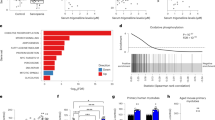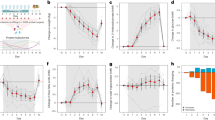Abstract
During the height of the 1992–93 famine in Somalia, data were collected from 573 inpatients at the Concern Worldwide Adult Therapeutic Centre in Baidoa, the town at the epicentre of the disaster. These data indicate that a body mass index (BMI, body weight in kilograms divided by height in metres squared) of less than 10 kg m−2 can be compatible with life, so long as specialized care is provided. Such low levels of BMI may be explained, in part, by the high ambient temperature, the tall phenotype of the Somalis, the gradual reduction in food intake and previous exposure to chronic energy deficiency. Famine oedema occurred with the same prevalence in male and female patients, but male patients had more severe oedema and a poorer prognosis at any given degree of severity. Survival from these extremes of emaciation has never before been recorded, and many of the BMI values documented here are below the level of 12, previously thought to mark the limit of human adaptation to starvation.
This is a preview of subscription content, access via your institution
Access options
Subscribe to this journal
Receive 12 print issues and online access
$209.00 per year
only $17.42 per issue
Buy this article
- Purchase on Springer Link
- Instant access to full article PDF
Prices may be subject to local taxes which are calculated during checkout
Similar content being viewed by others
References
Collins, S.R. The need for adult therapeutic care in emergency feeding programmes. JAMA 270, 637–638 (1993).
Winick, M. Hunger Disease. (Wiley-Intersfcience, New York, New York, 1979).
Moore, P.S. et al. Mortality rastes in displaced and resident populations of central Somalia during 1992 famine. Lancet 341, 935–938 (1993).
Centers for Disease Control. Population based mortality assessment: Baidoa and Afgoi, Somalia 1992. Morbid. Mortal. Weekly Rep. 41, 913–917 (1992).
Somali Red Cross & Red Crescent: Figures for the number of unclaimed bodies buried in Baidoa 1992–1993 (1993).
Henry, C.J.K. Body mass index and the limits of human survival. Eur. J. Clin. Nutr. 44, 329–335 (1990).
Keys, A. The Biology of Human Starvation (Univ. Minnesota Press, Minneapolis, Minnesota, 1950).
McCance, R.A. & Widdowson, E.M. Studies in undernutrition, Wuppertal 1946–9. (Medical Research Council, London, 1951).
Ville de Goyet, C., Seaman, J. & Geijer, U. The management of nutritional emergencies in large populations. (World Health Organization, Geneva, 1978).
World Health Organization. Use and interpretation of anthropometric indicators of nutritional status. WHO Bull. 64 (6) 929–941 (1986).
Ferro-Luzzi, A., Setti, S., Franklin, M. & James, W.P.T. A simplified approach to assessing adult chronic energy deficiency. Eur. J. Clin. Nutr. 46, 173–186 (1992).
James, W.P.T., Ferro-Luzzi, A. & Waterlow, J.C. Definition of chronic energy malnutrition in adults. Eur. J. Clin. Nutr. 42, 969–981 (1988).
James, W.P.T. & Shetty, P.S. Body mass index: An objective measure for the estimation of chronic energy deficiency in adults. (World Health Organization, Geneva, 1992).
Ross, A.R., Taylor, N., Hayes, R. & Mclean, M. Measuring malnutrition in famines: are weight for height and arm circumference interchangeable? Int. J. Epidemiol. 19 (3) 636–645 (1990).
Friedman, P. Severe arm-muscle wasting: Sign of lethal malnutrition in sick elderly men. Nutrition 7 (3) 223–226 (1991).
James, W.P.T. & Norgan, N.G. The value of arm circumference in assessing chronic energy deficiency in Third World adults. Eur. J. Clin. Nutr. 49, 883–894 (1994).
Mollinson, P.L. Observation on cases of starvation in Belsen. Br. Med. J. 5 (Jan) 4–8 (1946).
Lipscomb, F.M. Medical aspects of Belsen concentration camp. Lancet 1, 313–315 (1945).
Eveleth, P.B. & Tanner, J.M. Worldwide Variation in Human Growth (Cambridge Univ. Press, Cambridge, 1976).
Branca, F. & Abdulle, A. Famine in Somalia. Lancet 341, 1478 (1993).
Henry, C.J.K. Variability in adult body size: Uses in defining the limits of human survival. in Anthropometry: The Individual and Population. (Cambridge Univ. Press, Cambridge, 1993).
Burger, G.C.E., Sandstead, H.R. & Drummond, J. Starvation in western Holland: 1945. Lancet 282–283 (1945).
Leyton, G.B. The effects of slow starvation. Lancet 1, 73–79 (1946).
Shetty, P.S. Adaptive changes in basal metabolic rate and lean body mass in chronic undernutrition. Hum. Nutr. Clin. Nutr. 41C, 287–290 (1984).
Keys, A. Human starvation and its consequences. J. Am. diet. Assoc. 22, 582–587 (1946).
Gopalan, C. & Krishnaswamy, K. Famine oedema. Progr. Food Nutr. Sci. 1(3), 207–224 (1975).
Aykroid, W.R. The Conquest of Famine. (Chatto & Windus, London, 1974).
Beattie, J., Herbert, P.H. & Bell, D.J. Famine oedema. Br. J. Nutr. 2, 47–65 (1948).
Dean, A.G., Dean, J.A., Burton, A.H. & Dicker, R.C., Info version 6: A word processing, database and statistics programme for epidemiology on microcomputers. (USD Inc., Stone Mountain, Georgia, 1990).
Dallal, G.E. Logistic: A logistic regression programme for the IBM PC. Am. Statistic. 42, 272 (1988).
Author information
Authors and Affiliations
Rights and permissions
About this article
Cite this article
Collins, S. The limit of human adaptation to starvation. Nat Med 1, 810–814 (1995). https://doi.org/10.1038/nm0895-810
Received:
Accepted:
Issue Date:
DOI: https://doi.org/10.1038/nm0895-810
This article is cited by
-
Effectiveness of high cardiorespiratory fitness in cardiometabolic protection in prediabetic rats
Molecular Medicine (2022)
-
Validating the Alterable Weight Loss (AWL) Metric with 2-Year Weight Loss Outcome of 500 Patients After Gastric Bypass
Obesity Surgery (2014)
-
The Effects of Intrauterine Malnutrition on Birth and Fertility Outcomes: Evidence From the 1974 Bangladesh Famine
Demography (2014)
-
Verhungern von Schutzbefohlenen
Rechtsmedizin (2014)
-
Bariatric Outcomes Longitudinal Database (BOLD) Suggests Excess Weight Loss and Excess BMI Loss To Be Inappropriate Outcome Measures, Demonstrating Better Alternatives
Obesity Surgery (2012)



